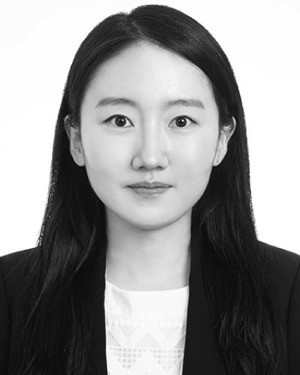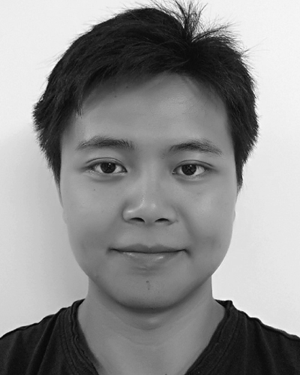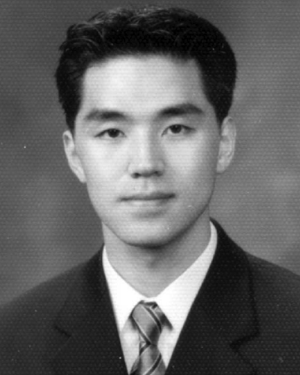Abstract:
This article describes an ultralow-power (ULP) temperature-compensated crystal oscillator (TCXO) with a pulsed-injection XO driver for IoT applications. Temperature compe...Show MoreMetadata
Abstract:
This article describes an ultralow-power (ULP) temperature-compensated crystal oscillator (TCXO) with a pulsed-injection XO driver for IoT applications. Temperature compensation is achieved by changing the load capacitance ( {C}_{L} ) between two values using a delta-sigma modulator ( \Delta \Sigma \text{M} ). The complex modulation profile across temperature is approximated as piecewise linear elements that is selected by a coarse temperature sensor. As a result, the power and area of fine-grain look-up tables (LUTs) or a polynomial engine used in prior works can be avoided. The proposed pulsed-injection XO driver that directly replenishes the energy of the {C}_{L} sustains the XO oscillation for the two different {C}_{L} states. Implemented in 40-nm CMOS, the proposed 32.768-kHz TCXO achieves an accuracy of ±4.2 ppm from −20 °C to 85 °C with just three-point trimming and an Allan deviation floor of 34 ppb while consuming 43 nW, which is an approximate 8 \times improvement over the recent state-of-the-art TCXOs.
Published in: IEEE Journal of Solid-State Circuits ( Volume: 57, Issue: 4, April 2022)
Funding Agency:

School of Electrical Engineering, Korea Advanced Institute of Science and Technology, Daejeon, Republic of Korea
Sujin Park (Graduate Student Member, IEEE) received the B.S. and M.S. degrees in electrical engineering from the Korea Advanced Institute of Science and Technology, Daejeon, South Korea, in 2016 and 2018, respectively, where she is currently pursuing the Ph.D. degree.
She was a Visiting Graduate Student with the University of Michigan, Ann Arbor, MI, USA, from 2019 to 2020. Her current research interests include sensor int...Show More
Sujin Park (Graduate Student Member, IEEE) received the B.S. and M.S. degrees in electrical engineering from the Korea Advanced Institute of Science and Technology, Daejeon, South Korea, in 2016 and 2018, respectively, where she is currently pursuing the Ph.D. degree.
She was a Visiting Graduate Student with the University of Michigan, Ann Arbor, MI, USA, from 2019 to 2020. Her current research interests include sensor int...View more

Department of Electrical Engineering and Computer Science, University of Michigan, Ann Arbor, MI, USA
Samsung Electronics Company Ltd., Hwaseong, Republic of Korea
Ji-Hwan Seol (Member, IEEE) received the B.S. degree in electrical engineering from Yonsei University, Seoul, South Korea, in 2009, and the M.S. degree in electrical engineering from KAIST, Daejeon, South Korea, in 2012. He is currently pursuing the Ph.D. degree with the University of Michigan, Ann Arbor, MI, USA, supported by the Samsung Fellowship Program.
He joined the DRAM Design Team, Samsung Electronics Company Ltd.,...Show More
Ji-Hwan Seol (Member, IEEE) received the B.S. degree in electrical engineering from Yonsei University, Seoul, South Korea, in 2009, and the M.S. degree in electrical engineering from KAIST, Daejeon, South Korea, in 2012. He is currently pursuing the Ph.D. degree with the University of Michigan, Ann Arbor, MI, USA, supported by the Samsung Fellowship Program.
He joined the DRAM Design Team, Samsung Electronics Company Ltd.,...View more

Department of Electrical Engineering and Computer Science, University of Michigan, Ann Arbor, MI, USA
Li Xu (Member, IEEE) received the B.Eng. degree in automation from Tongji University, Shanghai, China, in 2009, and the M.S. degree in electrical and computer engineering from Northeastern University, Boston, MA, USA, in 2016. He is currently pursuing the Ph.D. degree with the University of Michigan, Ann Arbor, MI, USA.
From 2009 to 2011, he was an IC Design Engineer with Ricoh Electronic Devices Shanghai Company Ltd., Sha...Show More
Li Xu (Member, IEEE) received the B.Eng. degree in automation from Tongji University, Shanghai, China, in 2009, and the M.S. degree in electrical and computer engineering from Northeastern University, Boston, MA, USA, in 2016. He is currently pursuing the Ph.D. degree with the University of Michigan, Ann Arbor, MI, USA.
From 2009 to 2011, he was an IC Design Engineer with Ricoh Electronic Devices Shanghai Company Ltd., Sha...View more

School of Electrical Engineering, Korea Advanced Institute of Science and Technology, Daejeon, Republic of Korea
Seonghwan Cho (Senior Member, IEEE) received the B.S. degree in electrical engineering from KAIST, Daejeon, South Korea, in 1995, and the S.M. and Ph.D. degrees in electrical engineering and computer science (EECS) from MIT, Cambridge, MA, USA, in 1997 and 2002, respectively.
In 2002, he joined Engim, Inc., Acton, MA, USA, where he was involved in data converters and phased-locked loop (PLL) design for IEEE 802.11abg WLANs...Show More
Seonghwan Cho (Senior Member, IEEE) received the B.S. degree in electrical engineering from KAIST, Daejeon, South Korea, in 1995, and the S.M. and Ph.D. degrees in electrical engineering and computer science (EECS) from MIT, Cambridge, MA, USA, in 1997 and 2002, respectively.
In 2002, he joined Engim, Inc., Acton, MA, USA, where he was involved in data converters and phased-locked loop (PLL) design for IEEE 802.11abg WLANs...View more

Department of Electrical Engineering and Computer Science, University of Michigan, Ann Arbor, MI, USA
Dennis Sylvester (Fellow, IEEE) received the Ph.D. degree in electrical engineering from the University of California at Berkeley, Berkeley, CA, USA, in 1999.
He held research staff positions at Synopsys, Mountain View, CA, USA, and Hewlett-Packard Laboratories, Palo Alto, CA, USA; and visiting professorships at the National University of Singapore, Singapore, and Nanyang Technological University, Singapore. He is currentl...Show More
Dennis Sylvester (Fellow, IEEE) received the Ph.D. degree in electrical engineering from the University of California at Berkeley, Berkeley, CA, USA, in 1999.
He held research staff positions at Synopsys, Mountain View, CA, USA, and Hewlett-Packard Laboratories, Palo Alto, CA, USA; and visiting professorships at the National University of Singapore, Singapore, and Nanyang Technological University, Singapore. He is currentl...View more

Department of Electrical Engineering and Computer Science, University of Michigan, Ann Arbor, MI, USA
David Blaauw (Fellow, IEEE) received the B.S. degree in physics and computer science from Duke University, Durham, NC, USA, in 1986, and the Ph.D. degree in computer science from the University of Illinois at Urbana-Champaign, Champaign, IL, USA, in 1991.
Until August 2001, he worked with Motorola, Inc., Austin, TX, USA, where he was the Manager of the High Performance Design Technology group and won the Motorola Innovatio...Show More
David Blaauw (Fellow, IEEE) received the B.S. degree in physics and computer science from Duke University, Durham, NC, USA, in 1986, and the Ph.D. degree in computer science from the University of Illinois at Urbana-Champaign, Champaign, IL, USA, in 1991.
Until August 2001, he worked with Motorola, Inc., Austin, TX, USA, where he was the Manager of the High Performance Design Technology group and won the Motorola Innovatio...View more

School of Electrical Engineering, Korea Advanced Institute of Science and Technology, Daejeon, Republic of Korea
Sujin Park (Graduate Student Member, IEEE) received the B.S. and M.S. degrees in electrical engineering from the Korea Advanced Institute of Science and Technology, Daejeon, South Korea, in 2016 and 2018, respectively, where she is currently pursuing the Ph.D. degree.
She was a Visiting Graduate Student with the University of Michigan, Ann Arbor, MI, USA, from 2019 to 2020. Her current research interests include sensor interface circuits, capacitance-to-digital converter, CMOS integrated sensors, and bbreak clock generation.
Sujin Park (Graduate Student Member, IEEE) received the B.S. and M.S. degrees in electrical engineering from the Korea Advanced Institute of Science and Technology, Daejeon, South Korea, in 2016 and 2018, respectively, where she is currently pursuing the Ph.D. degree.
She was a Visiting Graduate Student with the University of Michigan, Ann Arbor, MI, USA, from 2019 to 2020. Her current research interests include sensor interface circuits, capacitance-to-digital converter, CMOS integrated sensors, and bbreak clock generation.View more

Department of Electrical Engineering and Computer Science, University of Michigan, Ann Arbor, MI, USA
Samsung Electronics Company Ltd., Hwaseong, Republic of Korea
Ji-Hwan Seol (Member, IEEE) received the B.S. degree in electrical engineering from Yonsei University, Seoul, South Korea, in 2009, and the M.S. degree in electrical engineering from KAIST, Daejeon, South Korea, in 2012. He is currently pursuing the Ph.D. degree with the University of Michigan, Ann Arbor, MI, USA, supported by the Samsung Fellowship Program.
He joined the DRAM Design Team, Samsung Electronics Company Ltd., Hwaseong, South Korea, in 2012, where he contributed to the development of mobile DRAMs, including LPDDR2, LPDDR3, LPDDR4, and LPDDR5. His research interests include frequency synthesizers, deep learning hardware, memory systems, and ultralow power system design.
Ji-Hwan Seol (Member, IEEE) received the B.S. degree in electrical engineering from Yonsei University, Seoul, South Korea, in 2009, and the M.S. degree in electrical engineering from KAIST, Daejeon, South Korea, in 2012. He is currently pursuing the Ph.D. degree with the University of Michigan, Ann Arbor, MI, USA, supported by the Samsung Fellowship Program.
He joined the DRAM Design Team, Samsung Electronics Company Ltd., Hwaseong, South Korea, in 2012, where he contributed to the development of mobile DRAMs, including LPDDR2, LPDDR3, LPDDR4, and LPDDR5. His research interests include frequency synthesizers, deep learning hardware, memory systems, and ultralow power system design.View more

Department of Electrical Engineering and Computer Science, University of Michigan, Ann Arbor, MI, USA
Li Xu (Member, IEEE) received the B.Eng. degree in automation from Tongji University, Shanghai, China, in 2009, and the M.S. degree in electrical and computer engineering from Northeastern University, Boston, MA, USA, in 2016. He is currently pursuing the Ph.D. degree with the University of Michigan, Ann Arbor, MI, USA.
From 2009 to 2011, he was an IC Design Engineer with Ricoh Electronic Devices Shanghai Company Ltd., Shanghai, where he worked on LDO and dc/dc converter projects. During the summer of 2015, he was a Design Intern with Linear Technology Corporation, Colorado Springs, CO, USA. During the summer of 2020, he was a Research Intern with NVIDIA Corporation, Santa Clara, CA, USA. His current research interest includes energy-efficient mixed-signal circuit design.
Li Xu (Member, IEEE) received the B.Eng. degree in automation from Tongji University, Shanghai, China, in 2009, and the M.S. degree in electrical and computer engineering from Northeastern University, Boston, MA, USA, in 2016. He is currently pursuing the Ph.D. degree with the University of Michigan, Ann Arbor, MI, USA.
From 2009 to 2011, he was an IC Design Engineer with Ricoh Electronic Devices Shanghai Company Ltd., Shanghai, where he worked on LDO and dc/dc converter projects. During the summer of 2015, he was a Design Intern with Linear Technology Corporation, Colorado Springs, CO, USA. During the summer of 2020, he was a Research Intern with NVIDIA Corporation, Santa Clara, CA, USA. His current research interest includes energy-efficient mixed-signal circuit design.View more

School of Electrical Engineering, Korea Advanced Institute of Science and Technology, Daejeon, Republic of Korea
Seonghwan Cho (Senior Member, IEEE) received the B.S. degree in electrical engineering from KAIST, Daejeon, South Korea, in 1995, and the S.M. and Ph.D. degrees in electrical engineering and computer science (EECS) from MIT, Cambridge, MA, USA, in 1997 and 2002, respectively.
In 2002, he joined Engim, Inc., Acton, MA, USA, where he was involved in data converters and phased-locked loop (PLL) design for IEEE 802.11abg WLANs. Since November of 2004, he has been with the Department of Electrical Engineering (EE), KAIST, where he is currently a Professor. He was with Marvell Inc., Santa Clara, CA, USA, and Google, London, U.K., from 2011 to 2012 and from 2016 to 2017, respectively as a Research Scientist. His research interests include analog and mixed-signal circuits for low power communication systems, health-care devices, and CMOS sensors.
Dr. Cho has served on the Technical Program Committee for several IEEE conferences, including the International Solid-State Circuits Conference (ISSCC), the Symposium on Very-Large-Scale Integrated (VLSI), and the Asian Solid-State Circuits Conference. He was a co-recipient of the 2009 IEEE Transactions on Circuits and System Society Guillemin-Cauer Best Paper Award and the 2012 ISSCC Takuo Sugano Award for Outstanding Far-East Paper. He has twice received the Outstanding Lecturer Award from KAIST. He was an Associate Editor of the IEEE Journal of Solid-State Circuits and the IEEE Transactions on Circuits and Systems—I: Regular Paper. He was a Distinguished Lecturer of the IEEE Solid-State Circuits Society.
Seonghwan Cho (Senior Member, IEEE) received the B.S. degree in electrical engineering from KAIST, Daejeon, South Korea, in 1995, and the S.M. and Ph.D. degrees in electrical engineering and computer science (EECS) from MIT, Cambridge, MA, USA, in 1997 and 2002, respectively.
In 2002, he joined Engim, Inc., Acton, MA, USA, where he was involved in data converters and phased-locked loop (PLL) design for IEEE 802.11abg WLANs. Since November of 2004, he has been with the Department of Electrical Engineering (EE), KAIST, where he is currently a Professor. He was with Marvell Inc., Santa Clara, CA, USA, and Google, London, U.K., from 2011 to 2012 and from 2016 to 2017, respectively as a Research Scientist. His research interests include analog and mixed-signal circuits for low power communication systems, health-care devices, and CMOS sensors.
Dr. Cho has served on the Technical Program Committee for several IEEE conferences, including the International Solid-State Circuits Conference (ISSCC), the Symposium on Very-Large-Scale Integrated (VLSI), and the Asian Solid-State Circuits Conference. He was a co-recipient of the 2009 IEEE Transactions on Circuits and System Society Guillemin-Cauer Best Paper Award and the 2012 ISSCC Takuo Sugano Award for Outstanding Far-East Paper. He has twice received the Outstanding Lecturer Award from KAIST. He was an Associate Editor of the IEEE Journal of Solid-State Circuits and the IEEE Transactions on Circuits and Systems—I: Regular Paper. He was a Distinguished Lecturer of the IEEE Solid-State Circuits Society.View more

Department of Electrical Engineering and Computer Science, University of Michigan, Ann Arbor, MI, USA
Dennis Sylvester (Fellow, IEEE) received the Ph.D. degree in electrical engineering from the University of California at Berkeley, Berkeley, CA, USA, in 1999.
He held research staff positions at Synopsys, Mountain View, CA, USA, and Hewlett-Packard Laboratories, Palo Alto, CA, USA; and visiting professorships at the National University of Singapore, Singapore, and Nanyang Technological University, Singapore. He is currently the Edward S. Davidson Collegiate Professor of electrical and computer engineering with the University of Michigan, Ann Arbor, MI, USA. His research interests include the design of miniaturized ultralow power microsystems, touching on analog, mixed-signal, and digital circuits. He has published over 500 articles and holds more than 50 U.S. patents in these areas. His research has been commercialized via three major venture capital-funded startup companies: Ambiq Micro, Cubeworks, and Mythic.
Dr. Sylvester is also a member of the Administrative Committee for IEEE Solid-State Circuits Society. He was an IEEE Solid-State Circuits Society Distinguished Lecturer. He received 14 best paper awards and nominations and was named a Top Contributing Author at ISSCC and most prolific author at IEEE Symposium on Very Large Scale Integration (VLSI) Circuits. He is also an Associate Editor of IEEE Journal of Solid-State Circuits.
Dennis Sylvester (Fellow, IEEE) received the Ph.D. degree in electrical engineering from the University of California at Berkeley, Berkeley, CA, USA, in 1999.
He held research staff positions at Synopsys, Mountain View, CA, USA, and Hewlett-Packard Laboratories, Palo Alto, CA, USA; and visiting professorships at the National University of Singapore, Singapore, and Nanyang Technological University, Singapore. He is currently the Edward S. Davidson Collegiate Professor of electrical and computer engineering with the University of Michigan, Ann Arbor, MI, USA. His research interests include the design of miniaturized ultralow power microsystems, touching on analog, mixed-signal, and digital circuits. He has published over 500 articles and holds more than 50 U.S. patents in these areas. His research has been commercialized via three major venture capital-funded startup companies: Ambiq Micro, Cubeworks, and Mythic.
Dr. Sylvester is also a member of the Administrative Committee for IEEE Solid-State Circuits Society. He was an IEEE Solid-State Circuits Society Distinguished Lecturer. He received 14 best paper awards and nominations and was named a Top Contributing Author at ISSCC and most prolific author at IEEE Symposium on Very Large Scale Integration (VLSI) Circuits. He is also an Associate Editor of IEEE Journal of Solid-State Circuits.View more

Department of Electrical Engineering and Computer Science, University of Michigan, Ann Arbor, MI, USA
David Blaauw (Fellow, IEEE) received the B.S. degree in physics and computer science from Duke University, Durham, NC, USA, in 1986, and the Ph.D. degree in computer science from the University of Illinois at Urbana-Champaign, Champaign, IL, USA, in 1991.
Until August 2001, he worked with Motorola, Inc., Austin, TX, USA, where he was the Manager of the High Performance Design Technology group and won the Motorola Innovation Award. Since August 2001, he has been the Faculty Member with the University of Michigan, Ann Arbor, MI, USA, where he is currently the Kensall D. Wise Collegiate Professor with electrical engineering and computer science (EECS). He is also the Director of the Michigan Integrated Circuits Laboratory, Ann Arbor. He has published over 600 articles and holds 65 patents. He has researched on ultralow-power wireless sensors using subthreshold operation and low-power analog circuit techniques for millimeter systems. This research was awarded the MIT Technology Review’s “one of the year’s most significant innovations.” His research group introduced the so-called near-threshold computing, which has become a common concept in semiconductor design. Most recently, he has pursued research in cognitive computing using analog, in-memory neural networks for edge devices, and genomics for precision health.
Dr. Blaauw received numerous best paper awards. He also received the 2016 SIA-SRC Faculty Award for Lifetime Research Contributions to the U.S. Semiconductor Industry. He was the General Chair of the IEEE International Symposium on Low Power and a member of the IEEE International Solid-State Circuits Conference (ISSCC) analog program subcommittee.
David Blaauw (Fellow, IEEE) received the B.S. degree in physics and computer science from Duke University, Durham, NC, USA, in 1986, and the Ph.D. degree in computer science from the University of Illinois at Urbana-Champaign, Champaign, IL, USA, in 1991.
Until August 2001, he worked with Motorola, Inc., Austin, TX, USA, where he was the Manager of the High Performance Design Technology group and won the Motorola Innovation Award. Since August 2001, he has been the Faculty Member with the University of Michigan, Ann Arbor, MI, USA, where he is currently the Kensall D. Wise Collegiate Professor with electrical engineering and computer science (EECS). He is also the Director of the Michigan Integrated Circuits Laboratory, Ann Arbor. He has published over 600 articles and holds 65 patents. He has researched on ultralow-power wireless sensors using subthreshold operation and low-power analog circuit techniques for millimeter systems. This research was awarded the MIT Technology Review’s “one of the year’s most significant innovations.” His research group introduced the so-called near-threshold computing, which has become a common concept in semiconductor design. Most recently, he has pursued research in cognitive computing using analog, in-memory neural networks for edge devices, and genomics for precision health.
Dr. Blaauw received numerous best paper awards. He also received the 2016 SIA-SRC Faculty Award for Lifetime Research Contributions to the U.S. Semiconductor Industry. He was the General Chair of the IEEE International Symposium on Low Power and a member of the IEEE International Solid-State Circuits Conference (ISSCC) analog program subcommittee.View more


